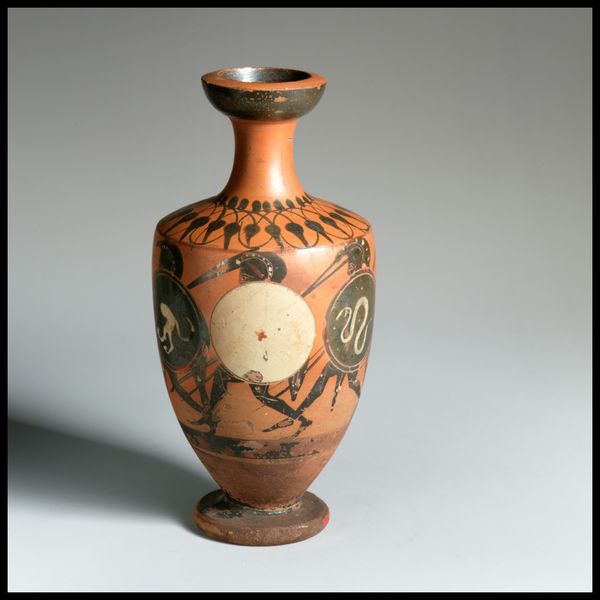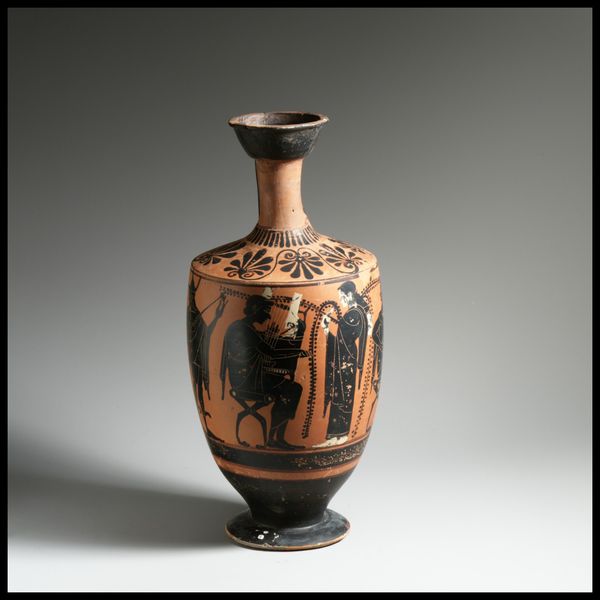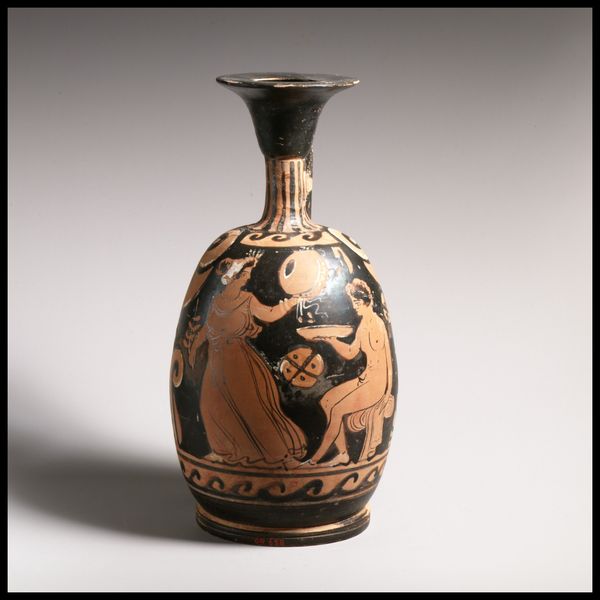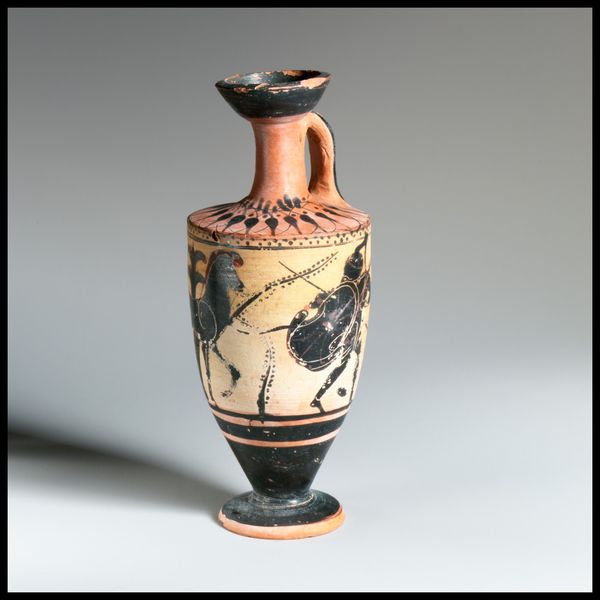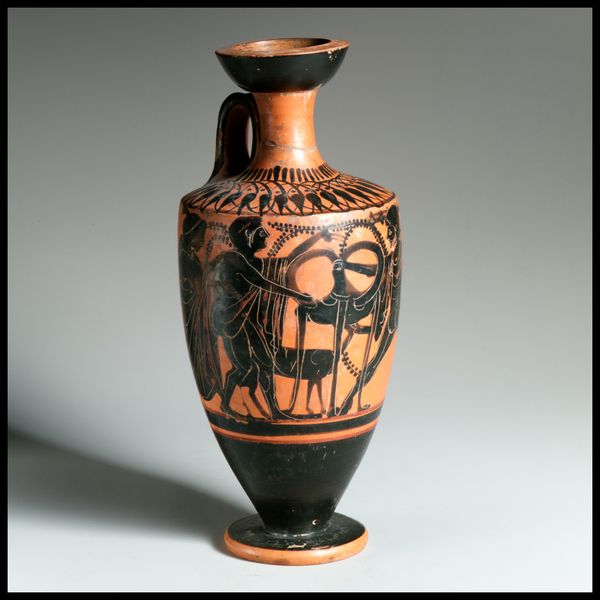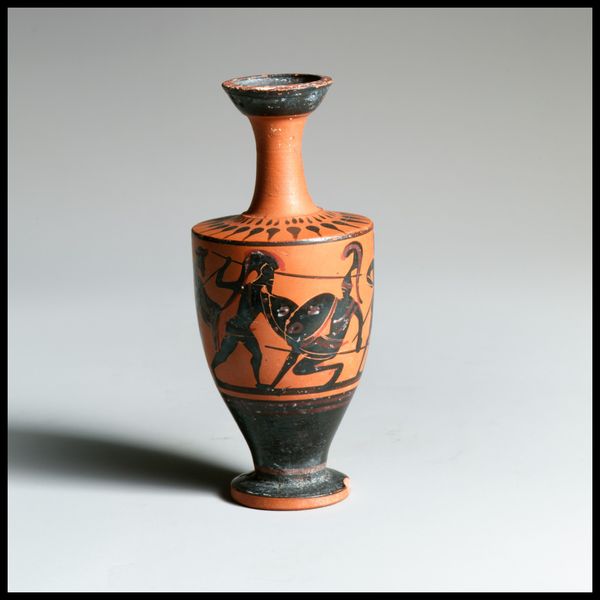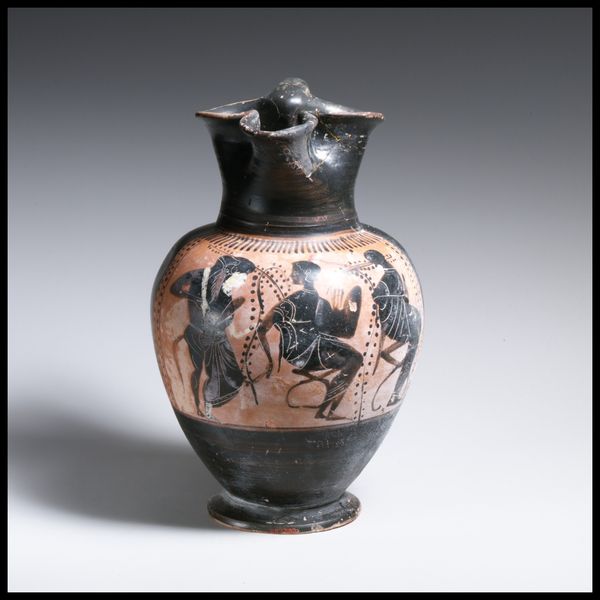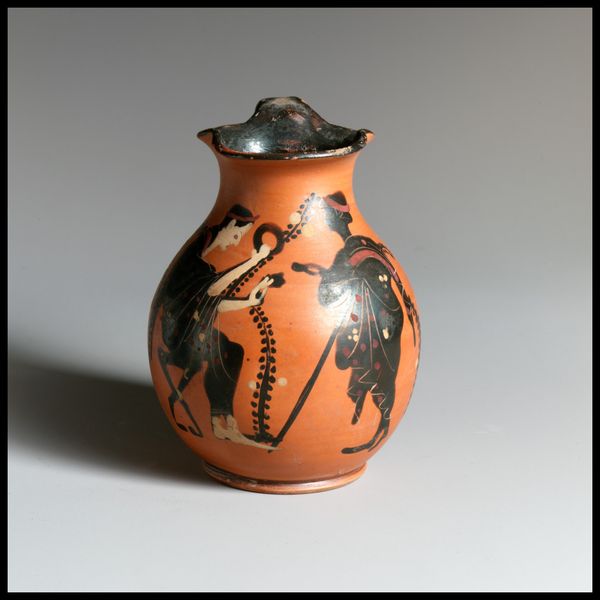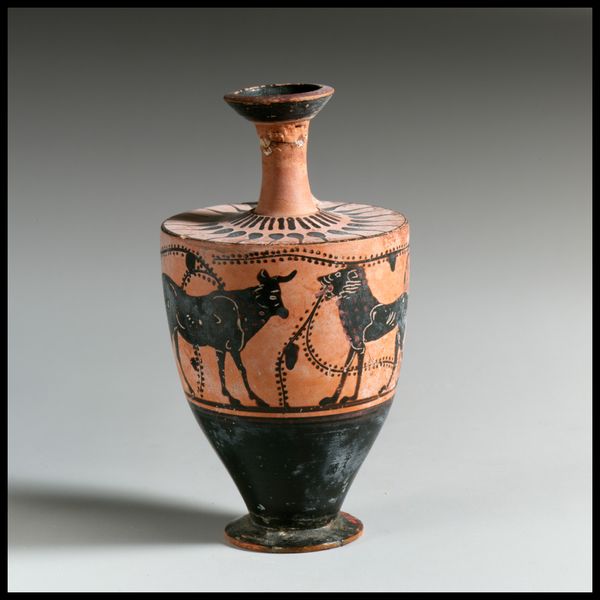
ceramic, earthenware
#
portrait
#
greek-and-roman-art
#
ceramic
#
vase
#
figuration
#
roman-art
#
earthenware
#
ancient-mediterranean
#
ceramic
#
line
#
earthenware
#
history-painting
Dimensions: 11 3/4in. (29.8cm)
Copyright: Public Domain
Curator: Here we have an example of ancient pottery, a lekythos dating back to 530 BC and attributed to the Capodimonte Group, currently residing at The Metropolitan Museum of Art. What strikes you most about this earthenware vessel? Editor: Initially, the striking contrast between the black figures and the reddish-orange background grabs my attention, imparting a powerful, graphic quality to the vase. I can only imagine the painstaking process involved in shaping and decorating the object by hand. Curator: Precisely! Notice how the artist utilizes a technique of black-figure painting, popular during that period. The sleek black silhouette relies on a dynamic interplay between positive and negative space, imbuing the scene with a tangible tension. Editor: I am intrigued by the scenes depicting warriors, their shields boldly embellished. Considering its function for holding oil, mostly for funerary rites, does the martial imagery hint at a valorization of heroic death? And thinking about who actually did the work of digging the clay, turning it, firing it? That is a labor of the soil. Curator: Intriguing proposition. If we consider the prevalent socio-political context in Ancient Greece, where warfare and athletic prowess held considerable importance, the illustration of armed fighters perhaps functioned as a symbol of honor and social standing. This iconography offers a glimpse into the prevailing cultural values of the epoch. Editor: It's quite remarkable how these scenes manage to survive millennia. One has to wonder how these simple earthen materials can evoke such an emotive, vivid snapshot into the lives of the people. I find it rather grounding to imagine all the hands that touched this work along the path from soil to a finished product. Curator: Agreed. Examining how the artist uses the material properties to realize formal elements is revealing, such as how they managed to coax detail out of mere shape and hue to create drama on such a curved surface. Editor: It brings the whole era into clearer view. Curator: Indeed, it underscores the remarkable human capacity to infuse simple things with enduring symbolic and emotive content.
Comments
No comments
Be the first to comment and join the conversation on the ultimate creative platform.

